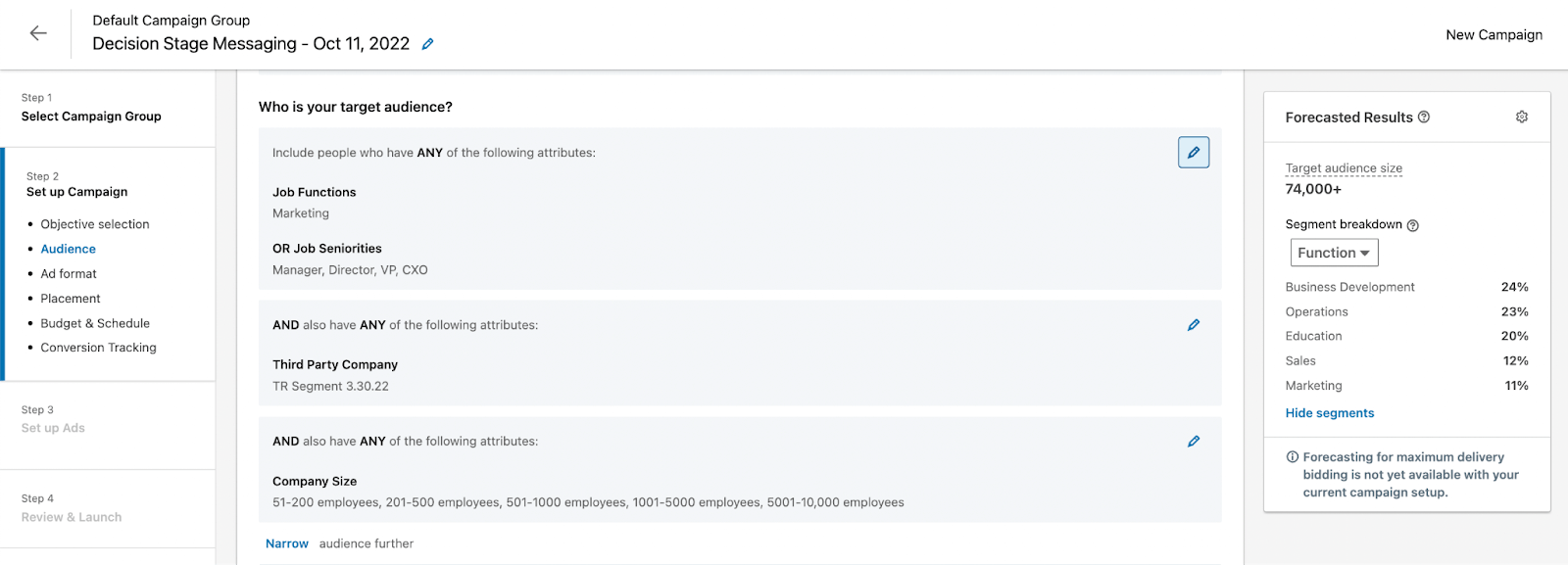Marketers, Put Your Money Where the ROI Is
ABM + intent can make your budget go further in times of economic turmoil.
Most experienced marketers have faced this situation: you’re part-way through the year with a defined budget and marketing plan you’ve been using since January when suddenly, economic circumstances outside of your control dictate that you must cut back—dramatically.
So what do you do when you have to cut back on spending but are still expected to drive the same results?
In times of economic turmoil, you need:
- An account-based strategy to spend your money and time on the right accounts.
- Intent data to spend your money and time on those right accounts… at the right time.
Target
Narrowing the focus to best-fit accounts with a named account strategy can help reduce wasted ad spend on reaching non-qualified accounts. This is well-established with ABM programs consistently showing higher ROI, with 76% of marketers seeing higher ROI with ABM than any other marketing strategy in a recent study by Demand Gen Report.
Like ABM, intent data has a well-established ROI, with 97% of companies reporting a positive ROI from their intent data strategy.
But they’re even more powerful when coupled together.
In an account-based strategy, you can better prioritize your accounts by using downstream intent data, or behavioral data reflective of buyers researching your product on channels other than your own website. You can reach out to your target accounts when they’re in-market and showing intent signals rather than wasting your breath when they’re not in a buying cycle.
Prioritize your best-fit accounts by ICP match and buying stage—as identified by intent data signals—to reach the right people at the right time.
Here you can see an example of how Triblio uses this strategy:
Buying Stage
|
Awareness Branding |
Consideration Lead nurture |
Decision Set meetings |
Purchase Qualify and close |
|
| Strong ICP match |
Marketing |
Marketing BDR |
BDR Sales Marketing |
Sales Marketing |
| Moderate ICP match |
Ignore | Marketing |
BDR Marketing |
Sales Marketing |
| Weak ICP match |
Ignore | Ignore | Ignore | BDR |
Intent signals are a powerful tool to identify which buying stage an account falls in.
For example, intent data signals such as comparing competing vendors on TrustRadius can be used to identify decision-stage accounts. On the other hand, consideration-stage accounts may be consuming content such as online publications on specified intent data topics, such as product categories.
You can think of the stages as simply as this:
-
- Awareness = problem aware
- Consideration = solution research
- Decision = solution/competitor aware
Let’s take this framework and build out an account-based intent data strategy for Triblio as an example:
- Our awareness-stage accounts could be accounts with intent signals such as consuming content with intent data topics like marketing ROI or revenue operations.
- Our consideration-stage accounts could be accounts with intent signals such as consuming content with intent data topics like account-based marketing or predictive analytics.
- Our decision-stage accounts could be accounts with intent signals such as comparing competitor products in TrustRadius.
It’s important to treat different intent data signals differently because they represent varying levels of urgency and intent. If you wait to pick “low-hanging fruit,” it might rot by the time you get to it. In the same way, if you don’t prioritize decision-stage accounts, they’ll decide to go with another vendor before you ever break into the account.
Reach
Once you’ve designed a framework for targeting and prioritizing your accounts by intent, it’s time to reach them with the right messaging.
Since timing is of the essence, using dynamic intent data sources to reach accounts in real time across channels is key.
You can combine an account-based targeting strategy with intent data signals to reach the best-fit accounts when they have intent.
Let’s take our ICP and combine it with the previously described decision-stage criteria.

Here you can see I’ve taken ICP criteria: company size, job function, and seniority, and coupled it with a third-party company segment of accounts from TrustRadius. This will give me a dynamic audience of LinkedIn members who meet this criteria that is automatically updated and synced from TrustRadius. You can then make it more specific, layering on title or industry-specific targeting depending on your needs.
Then what?
Once you’ve reached accounts with LinkedIn advertising, continue to engage them across channels. Next, I might set up a display retargeting campaign within Triblio to stay top-of-mind for these accounts. By combining high-fit accounts with intent data and retargeting, you can maximize your return from paid media investments by maximizing your impressions among in-market buyers and minimizing wasted ad spend on accounts that aren’t in a buying cycle.
Engage
Once you’ve prioritized and targeted your audience with intent data, you shouldn’t stop there.
Use intent topics in your account-based personalization to craft messaging that resonates with your target audience. For example, here are some common intent data signals and how you could use them to tailor your messaging:
- Researching competitors on a review site > Competitive messaging such as “Here’s how we stack up against our competitors” or reviews where the reviewer chose your business over category alternatives
- Installed a marketing automation tool such as HubSpot > Integration information such as “Learn about our integration with HubSpot” or positive reviews from users who use both products
- Posted a relevant job > Tailored gifting or information on how your product is relevant to the success of their expanding team, for example “Congratulations on your team’s expansion! Here’s how our platform can help your new employee meet and exceed your expectations”
Account-based messaging can be personalized based on intent signals at scale with content personalizations or on a 1:1 basis through your sales team’s prospecting, using information such as industry, category research, intent topic/keyword, or competitor intent signals.
By combining an account-based framework with intent data activation, you can make sure your go-to-market strategy perfectly addresses who to reach out to, when to reach out, and what to say.
Why ABM + intent is critical
- 76% of B2B marketers have agreed that ABM delivers a higher ROI than other marketing activities
- According to research from TrustRadius, 70% of B2B marketers are using or plan to use intent data for prospecting, account-based marketing (ABM), or email marketing
- A lack of reliable data is one of the top reported challenges for account-based marketers: 43% said unreliable data makes it difficult to know who to target within their accounts
- TrustRadius downstream intent data customers saw a 75% increase in ad conversion and ABM performance on average
How to get started
Ready to get started with ABM + intent? Check out Triblio and TrustRadius’ upcoming webinar, Demystifying Intent Data: Navigating the B2B Marketplace.
In it, subject matter experts from Triblio, TrustRadius, and Leadsift will answer the most common intent data questions they receive with practical strategies for getting started.






